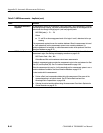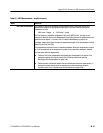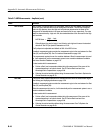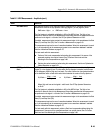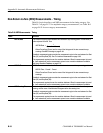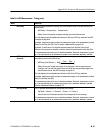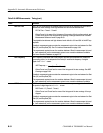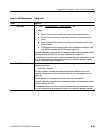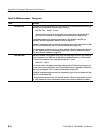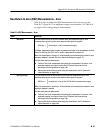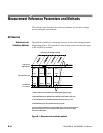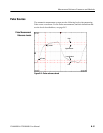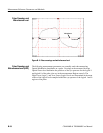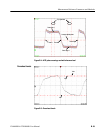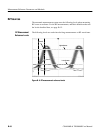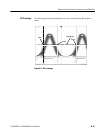
Appendix B: Automatic Measurements Reference
B-54
CSA8000B & TDS8000B User Manual
Table B- 8: NRZ Measurements - Timing (cont.)
Name Definition
NRZ Rise Time Computes the time interval between the mean crossings of the low reference level and the high
reference level to characterize the posit ive sl ope of t he eye.
NRZ Rise Time = TcrossH -- HcrossL
Where TcrossH is t he mean of the histogram of the crossing of the high reference level,
and TcrossL is the mean of t he histogram of t he crossing of the low reference level.
The adjustable High and Low reference levels defaul t to 10% and 90% of the NRZ eye
amplitude. See NRZ Measurement Reference Levels on page B--63.
If enabled, measurement gates constrain the measurement region to the area between the Start
Gate (G1) and Stop Gate (G2). See To Localize a Measurement on page 3--83.
This measurement requires the use of a waveform database. When this measurement is turned
on, it will automat ically set the measurement system to use a waveform database if available.
See Use a Waveform Database on page B--70.
NRZ RMS Jitter Jitter is the measure of time variance on the rising and falling edges at the NRZ eye crossing or
at the mid-reference level. RMS Jitter is defined as one standard deviation (σ) of that variance.
The mean of the histogram of the crossing data distribution is Tcross.
RMS Jitter = Tcrossσ
The Jitter At control in the Measurement Setup dialog specifies if the jitter is to be measured at
the eye cross or at t he mid-reference level. The mid-reference level is adjustable and defaults to
50% of the eye amplitude. See To Localize a Measurement on page 3--83.
If enabled, measurement gates constrain the measurement region to the area between the Start
Gate (G1) and Stop Gate (G2).
This measurement requires the use of a waveform database. When this measurement is turned
on, it will automat ically set the measurement system to use a waveform database if available.



